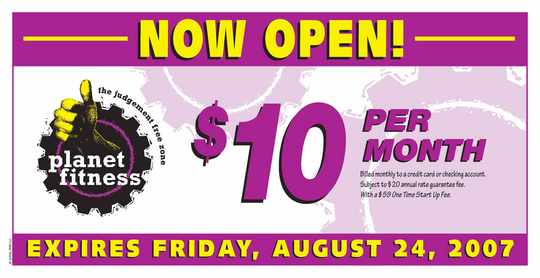Differentiation Strategies For Health Club Competitors
/ I get to speak with a lot of health club operators, along with other fitness participants, and a big question they ask is "how do I compete with budget competitors?" Concepts like Planet Fitness and others are offering memberships as low as $9.95 a month - this is concerning for many (see video below). I share the view that 80% of the U.S. market will be in the $19.95 monthly membership tier within a few years.
I get to speak with a lot of health club operators, along with other fitness participants, and a big question they ask is "how do I compete with budget competitors?" Concepts like Planet Fitness and others are offering memberships as low as $9.95 a month - this is concerning for many (see video below). I share the view that 80% of the U.S. market will be in the $19.95 monthly membership tier within a few years.
The Budget Gym trend is her to stay (check out How the Bricks and Mortar Fitness Business Is Changing), and therefore the issue of how to compete is an important one.
A key way to combat this price oriented competition is through a marketing differentiation strategy. A facility owner can create the perception of uniqueness in the minds of customers. Marketing differentiation strategies can be based on price, service, a unique focus or a different product mix. For more on being different check this out.
Differentiation marketing helps you stand out in a crowded marketplace. It can be an important strategy to implement, especially if there is a lot of similarities among competitors. An effective differentiation strategy gives customers a reason to choose your facility by pointing out subtle or less obvious differences or benefits that customers may not be aware of.
There are several types of marketing differentiation strategies. With a pricing strategy, you attempt to position your business as the low-price alternative - which is what the budget facilities are doing. A high-price strategy can also be used to create a perception of prestige. A product/service strategy emphasizes your program offering, outstanding group fitness via Les Mills is a good example of this. A customer service strategy points out your superior service. With a focused strategy, your marketing emphasizes a unique feature like a convenient location, or attempts to appeal to a specific market segment. But there is something even more important when it comes to differentiation for health clubs.
It’s a clone club. And, that creates a big challenge for both the folks in marketing and sales. With a few exceptions, beyond the window-dressing, you could swap one brand for another fairly easily, leaving price and convenience as the primary selling points. In a market where there’s little competition, that’s survivable. But, as soon as more clubs with similar features arrive, you’re left with price as the primary differentiator and that’s a bad place to be. In an attempt to try to overcome clone club syndrome, club owners task marketers, advertising agencies and PR people with “positioning” their solution as bigger, better, cooler, cuter, edgier, hipper, funnier and different, when in reality it’s not.
Jonathan is right. Many clubs are very much the same so differentiation is difficult So what to do ? Why not focus your differentiation and marketing strategies on what prospects want - results. And by the way, why not utilize social media instead of high pressure sales tactics and old school direct mail ?
Watch the IHRSA Live Video below from IHRSA's Ask An Industry Leader Program. What do you think ? How should fitness facilities and health club operators use differentiation strategies to compete with low price budget gyms ? Contact me, Bryan O'Rourke, and share your views and experiences.








